advertisement
Tech that died in 2019: We bid farewell to…
It’s the end of 2019. The last year of a glorious decade that brought us the iPad, the Ultrabook, wearables,…

It’s the end of 2019. The last year of a glorious decade that brought us the iPad, the Ultrabook, wearables, VR, and a fleet of smart home devices. Okay, none of those things happened in 2019, but this past year was still important to the passing decade. This was the year that several infamous services and gizmos headed off into the horizon, or faded into darkness after hanging on far too long.
For 2019, we noticed that some high-profile companies experienced multiple tragic deaths, while other demises seemed to cluster naturally within particularly troubled product categories. Here’s our look at the biggest tech deaths of the year, organized into company or theme.
Microsoft: Mistakes were made
 MARK HACHMAN / IDG
MARK HACHMAN / IDG
advertisement
Windows 10 Mobile: Speaking of hanging on for far too long. In December, we saw the complete end to Microsoft’s homegrown smartphone effort. On December 10, 2019, Microsoft stopped delivering security patches to Windows 10 Mobile devices.
Anyone still rocking the HP Elite x3 (which was actually a really great phone) or Lumia 650 can still use their handsets, just without the backing or support of Microsoft. If something breaks, or a horrific vulnerability destroys the Metro interface as we know it, users are out of luck. That’s for regular folks, anyway. Corporate types have a lifeline to carry on for a little bit longer, just as they did with Windows XP.
It’s a shame that Microsoft’s mobile effort came to this point. Windows 10 Mobile and its predecessors were an original take on what a smartphone could be. It looked and behaved nothing like the grid of icons on an Android or iOS device, but it was still very usable. Unfortunately, a toxic mix of lackadaisical carrier support, poor developer interest, and indifference from smartphone buyers sealed the fate of Windows phones long ago.
advertisement
Microsoft Store Books: The trouble with digital goods is they can disappear if the retailer goes out of business. That’s what happened in July, 2019, when Microsoft exited the literary scene, and ebooks purchased from the Microsoft Store stopped working.
Microsoft’s ebook venture had been short-lived, and to the company’s credit, it didn’t just flip the table and walk away. The company said it would refund all book purchases for its approximately six ebook customers.
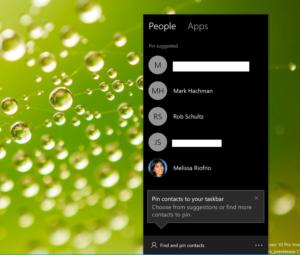 MARK HACHMAN / IDG
MARK HACHMAN / IDG
advertisement
Windows 10’s My People: Fine, fine, this death won’t happen until 2020 or later, but we found out about it in November. Microsoft is deprecating the My People app that was first introduced in Windows 10 1709. If you don’t know what we’re talking about, it’s that little outline of two people that sits in the taskbar.
The idea behind the feature was interesting enough. You’d select five contacts, and then shortcuts for messaging them would sit in your taskbar. You could send messages or receive notifications from your peeps. The idea was to bring the People, Mail, and Skype Windows 10 apps into one spot where you could contact the people most important to you, be they colleagues, family members, or friends.
The trouble was it didn’t work if you weren’t using Microsoft’s People app to store your contacts. It also couldn’t connect to third-party services people actually used, such as Gmail or social networking sites. Making a deal with Google or Facebook might have been tricky to pull off, but without it My People was pretty much dead before it even launched.
 MICROSOFT
MICROSOFT
Microsoft’s online games: This one wasn’t really a mistake, and more of an “all good things come to an end” moment. In July, Microsoft started shutting down its servers for Internet Backgammon, Checkers, Spades, Hearts, Reversi, and MSN Go. July was when Windows XP users lost access to the games, and Windows 7 users will lose support on January 22, 2020. Interestingly, that’s eight days after Microsoft ends support for Windows 7 itself, but we’ll save that story for next year.
Shattered AR/VR dreams
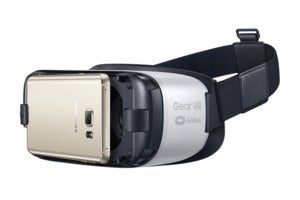 OCULUS
OCULUS
Gear VR: The virtual reality craze took a step back in 2019. In August, we found out that Samsung would no longer support the Gear VR headset for the Galaxy Note 10. And with that, what many people had assumed for years became reality: The Gear VR platform was dead.
Samsung got into virtual reality early on, during the initial hype over the Oculus Rift headset. The company then worked with Oculus to create a stripped-down headset for its phones, and started offering them for free with new devices.
Everything seemed to be going well until about 2018, as Android Central reports, and then it was pretty much over. Oculus moved on to the Oculus Go, and Samsung just gave up.
Daydream View: Following Samsung’s Gear VR non-shocker, Google said in October that the Pixel 4 smartphone wouldn’t support the Daydream View. The company also stopped selling the headset, as reported by Variety.
Just like that, and after just three years, Google exited the mobile VR space. The company still has some interest in VR with augmented and virtual reality apps. You can also still buy the uber-cheap (and hacky) Google Cardboard, but any interest in VR mobile hardware beyond that is pretty much over.

Explorer Edition Google Glass: Google Glass was another interesting experiment that never really went anywhere. In December, Google announced it would offer one final update for the Google Glass Explorer Edition. The update removes the need to use a Google account on Glass, and it also cuts the connection to back-end services.
The update has to be manually installed and will become mandatory after February 25, 2020. At that point, Explorer Edition users won’t be able to use apps such as YouTube and Gmail with their headset. The camera functions will continue to work, however.
Google Glass was a neat idea, giving users a heads-up display for phone calls and maps, and the ability to snap a pic quickly on the go. But Glass was widely considered to be creepy and looked just plain goofy. Perhaps if Google had figured out how to include all that computing power in a regular pair of glasses, it would’ve caught on. That may be something we see in the future, but this first bold adventure is over, at least for consumers—the enterprise version is still supported.
Game Over
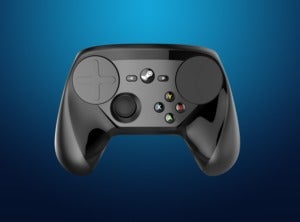 VALVE
VALVE
Steam controller: Valve’s hardware record so far has been, well, awful. The company cut its losses awhile ago on its Steam Machines and dreams of a living room PC gaming box. Then it unloaded the Steam Link at uber-cheap prices in 2018.
Beyond the two boxes, Steam also had its controller. That was easily the most revolutionary item in its living room strategy, and yet its time finally came in 2019. The controller bade farewell in December, when they were sold off for a measly $5.
The Steam Controller was an innovative and interesting take on the game controller. It had customizable touchpads on the right and left to get just the right sensitivities for your gaming style. When we reviewed the Steam Controller in 2015, we thought it was the best part of Valve’s hardware blitz. We called it an “elegant solution to a seemingly insurmountable problem—‘How do you play every PC game ever made on a single input device?’ The future of PC gaming in the living room is still going via Valve’s Steam Link app for Android, but the hardware side appears to be over for Valve—unless there really is a Steam Controller 2 in the works.
 SONY
SONY
PlayStation Vue: Every major tech trend has the same familiar pattern. It starts with a ton of companies jumping on for the ride. Over time, competitors start to fall away, until the winners are left standing.
In October, the herd of premium live TV streaming services started thinning out. That’s when Sony announced PlayStation Vue would shut down as of January 30, 2020.
While Sony never officially explained the reason for PlayStation Vue’s disappearance, reports say the subscriber base wasn’t large enough, and the service couldn’t keep up with the competition.
Google cuts its losses
 GOOGLE
GOOGLE
Google Print: It was a shame when Google announced in November it would give up on Google Cloud Print. The free feature allowed you to print from anywhere to your home printer. It was also the key way to print on Chrome OS devices. By the time Google Cloud Print disappears on January 21, 2020, Chrome OS devices will have a native printing experience to satisfy both enterprise and consumer users. But to send that PDF from the cafe to your home printer, you’ll need a different service.
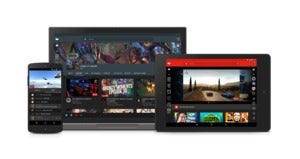 YOUTUBE
YOUTUBE
YouTube Gaming App: You just can’t beat Twitch, at least when it comes to live-streaming games. Still, YouTube decided to give it a try in 2015, with the launch of its YouTube Gaming app. It featured all things gaming, including the ability to follow certain games and view live streams.
After a few years of fun, YouTube gave up in May and said goodbye to its standalone gaming video apps for Android and iOS. You can still find a gaming section inside the regular YouTube apps, but YouTube Gaming as a separate identity went permadeath in 2019.
 GOOGLE
GOOGLE
Chromecast Audio: Google’s Casting platform is a brilliant idea. It relies on a feature built into apps you already use to send streams from your phone to any modern television via a cheap HDMI dongle. It’s a fantastic tool for video, but it didn’t catch on for music.
Google released an audio-only dongle in 2015 that turned any pair of speakers with a 3.5mm jack into a Spotify-friendly set-up. Four years later, Google discontinued the music-focused streaming device, as reported by Android Police. There was hope the Google Nest Mini might become an alternative to Chromecast Audio by having a built-in audio jack, but that was not to be. You can stream audio to a Google Home or Nest Mini, but currently, there is no Google-branded alternative to the Chromecast Audio, and that’s a shame.
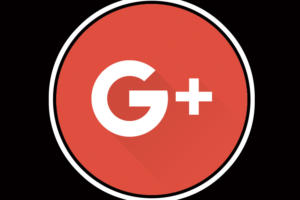 GOOGLE
GOOGLE
Google+: In April, Google closed its failed social network Google+ for good. There was some big excitement around the social network when it first started in 2011, but within a few years it was a ghost town.
It’s kind of amazing Google+ didn’t shut down earlier, but it kept puttering along with almost no one using it. Two different data breaches in 2018 changed that, and prompted Google to shut it down for good.
 GOOGLE
GOOGLE
Inbox by Gmail: Gmail’s Inbox came out in 2014 with a brand new way to organize your email. It grouped messages into subject categories such as travel, purchases, and so on. Gmail already had something similar with its tabbed interface introduced in 2013, but Inbox took that even further with more fine-grained categories.
It was a nice idea, but convincing large numbers of people to use it instead of, or in addition to, Gmail was just never going to happen. Google lost interest in keeping up with the app, and started folding some of its features directly into Gmail. Then in April Google, cleared out Inbox for good.
Hollywood turns out the (UltraViolet) light
 ULTRAVIOLET
ULTRAVIOLETIn an attempt to offer a better alternative to piracy, Hollywood came up with the UltraViolet digital rights locker. Released in 2011, the idea was you’d buy a movie and then a get a digital version along with it. The digital version would exist in your own personal digital locker, and you’d be free to view it on the device of your choice.
By 2018, the studios stopped using the system, and by July, 2019, it shut down. Before UltraViolet closed, users transferred their UltraViolet rights to Walmart’s Vudu and other services to keep on enjoying all those digital rights. Well, at least until those services dissolve too.
That brings us to the end of our look at tech that kicked the bucket in 2019. Don’t be too sad. Part of the journey is the end, as they say in the comic book movies. Besides, the tech journey begins anew in 2020.